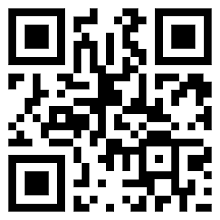#######################################
You Scan
By Will Rourk
APR2010
What does it take to rapidly get a building, monument or even a landscape into your computer? Laser scanning technology might be able to provide the answer. Laser scanning is a technology that allows the analysis of physical material to be transformed into digital data. Scanning large objects usually involves a particular type of scanner referred to as a time-of-flight scanner. This type of scanner basically works by flashing a stripe of laser light on a surface and then measures the time it takes for the light pulse to bounce back to the laser source. The light pulse is identified with the point on the surface of the object it scans, translating it into a 3D point created digitally via computer software. The group of digital points captured by the scanner are stitched together to form a 3D mesh model that can be manipulated in any 3D or CAD program. A time-of-flight scanner can produce data that is accurate up to 1-2mm. 2D images taken concurrently with the laser scanning can be applied as textures to the 3D generated model for more realistic rendering.
Large scale scanning is more prominently utilized in the construction and engineering industries as a means of creating "as-built" schematics and drawings particularly for projects invovling highways, bridges and tunnels. Landforms can also be scanned, usually from an airplane, to generate landscape models for analysis and planning.
Laser scanning is also benefiting cultural heritage and archaeologically based projects. Academic researchers have been able to successfully employ laser scanning techniques to capture 3D data from historical sites and monuments for analysis and critical exploration. One such faculty member at the University of Virginia is research scientist David Koller. Koller is internationally known for his work in 3D laser scanning, particularly as the scanning engineer responsible for capturing monuments from the Digital Michaelangelo project.
In 1999, Koller was part of a team of faculty and students from Stanford University and the University of Washington that traveled to Italy to make high resolution scans of Michaelangelo's sculptures and architecture. One of the more famous projects from this trip included the scanning of Michaelangelo's statue of David which the team was able to capture at 1/4 mm resolution. At this resolution the artist's chisel marks could be detected on the 3D model.
Although many of Koller's scanning projects have taken place in Europe, he has recently been involved in historic preservation efforts here in Virginia. This includes a major digital preservation effort undertaken by a joint collaboration between Colonial Williamsburg's Digital History Center and UVA's Institute for Advanced Technology in the Humanities (IATH) for "digital conservation" of buildings in Colonial Williamsburg.
Known as the "Virtual Williamsburg Project", this effort seeks to re-create the city of Williamsburg as researchers believe it had originally existed during the American Revolution. Part of Koller's work has been to scan existing structural ruins and foundations of some of these historic buildings as well as existing buildings to better understand the composition of the old city. Some of Koller's tools of his trade include the FARO LS880, the Leica ScanStation and the Leica HDS6000 for capturing exterior building surface data and the DeltaSphere 3000 for interior room scans. As a researcher he has worked in conjunction with scanner distributors, FARO in Charlotte, North Carolina and Leica Geosystems in Richmond, to test the latest equipment for accuracy in data resolution and acquisition. He's also collaborated on scanning technologies with Direct Dimensions a scanning contractor from Baltimore, MD, who have been responsible for major scanning projects on the East Coast including the 3D laser scan of the Liberty Bell.
A seasoned expert in large scale laser scanning, Koller sees active scanning technologies moving away from the use of laser light for data capture to a passive capture technique using photographic images.
Currently a technique called structured light scanning can be found on Youtube demonstrating how to make rough 3D point cloud models with just a webcam. With higher resolution digital cameras becoming more affordable, 3D passive scanning may be a reality for high resolution models in the future. For now laser light surface scans are providing the best results for accurate capturing of real life objects to be easily transformed into computer models for your favorite 3D and CAD software.
#######################

